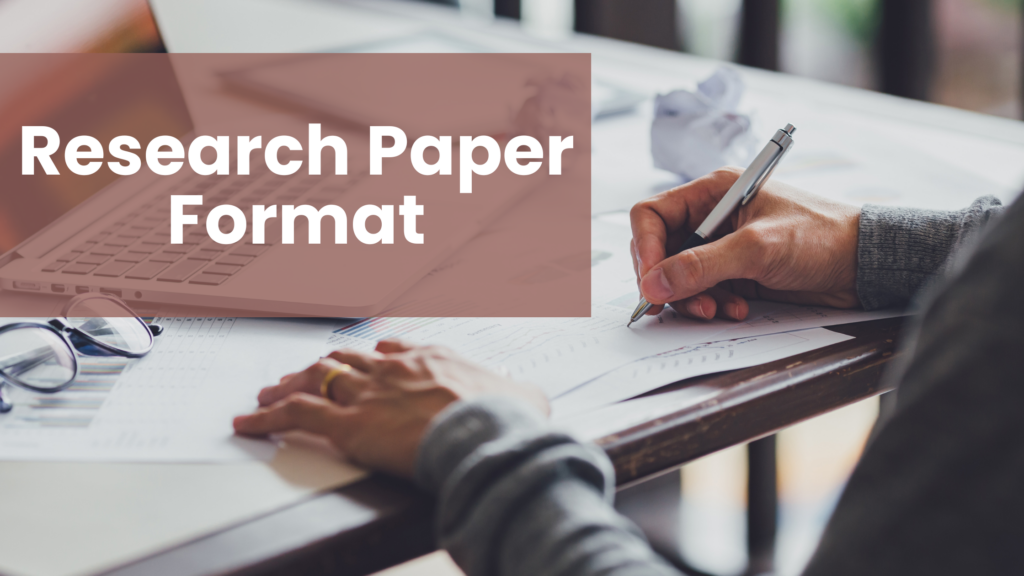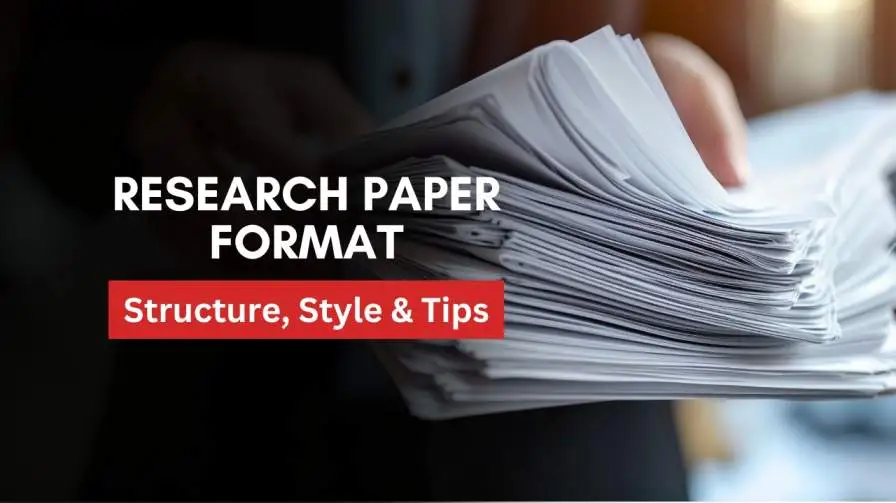writing a studied paper can be a great task, particularly while trying to perfect its format. Whether you are new to educational writing or a seasoned researcher, expertise in the shape, style, and tips codecs is essential to imparting your work professionally and gaining credibility. A study paper’s layout no longer enhances clarity however additionally guarantees that your research adheres to institutional suggestions.
Let’s delve deeper to know how to perfect your studies paper layout, such as structure, style and tips for normally used codes consisting of APA and IEEE. Whether you are making a studies paper inside the sciences, humanities, or social sciences, this comprehensive guide will help you create well mannered Research paper.
Understanding the Research Paper Format
The research paper format refers back to the specific way in which the content is organized, styled, and noted. Different academic subjects may additionally require one-of-a-kind formats, but the middle additives continue to be regular. These consist of the identity page, summary, advent, methodology, consequences, discussion, conclusion, and references. A basic layout also improves clarity, making your research paper format less difficult to recognize by leaving a greater impact.
Core Structure of a Research Paper
The count which styles you select the shape of a study paper normally includes the subsequent additives:
- Title Page: The title web page is the first influence of your paper. It consists of
- Title of the paper
- Author’s name(s)
- Institutional association
- Course call and code (if required)
- Instructor’s call
- Submission date
In particular research paper format, along with APA, it is usually a strolling head and a webpage quantity at the top.
- Abstract: An abstract is a concise summary of your studies. Typically starting from a hundred and fifty to 250 words, the summary must
- Summarize the research question or speculation
- Briefly describe the method
- Highlight the principal findings and end
- This phase facilitates readers quickly understand the point of interest and final results of your observation.
- Introduction: The creation units the level on your research. It includes
- A short history of the topic
- The studies question or hypothesis
- The importance of the examine
- Objectives and goals
- Literature Review (Optional): In a few research papers, a literature evaluation is protected to look at current studies applicable to your topic. This section demonstrates your understanding of the current panorama and identifies gaps that your research ambitions to fill.
- Methodology: The methodology explains the way you performed your studies. It covers
- Research paper format(qualitative, quantitative, or blended strategies)
- Sample size and selection
- Data series techniques (surveys, experiments, interviews, and so on.)
- Analytical strategies
- A clear method lets in different researchers to duplicate your study.
- Results: In the effects phase, showcase your findings without interpretation. Use tables, graphs, and charts to visually constitute the facts.
- Discussion: Here, interpret the results, explain their significance, and relate them to the research question. It also addresses any such boundaries and advises regions for further research.
- Conclusion: The conclusion ties the whole thing together, summarizing the important findings and their implications. It depicts the importance of your studies and shows the way things might be implemented in the future.
- References/Bibliography: This section lists all the resources you referred to in your paper. Ensuring that your citations are very well formatted is crucial.
Common Research Paper Styles and Their Formats
Different educational fields observe different quotation styles. Here, we can cover no. of the maximum research studies paper codecs: APA and IEEE.
- APA Research Paper Format: The American Psychological Association (APA) format is broadly used in social sciences which includes psychology, sociology, and schooling. APA’s unique suggestions help keep uniformity throughout papers in the subject.
- Key Features of APA Format:
- Title Page: The name webpage in APA consists of the paper’s identify, creator name, organization, path, teacher, and submission date.
- Running Head: A shortened identify (much less than 50 characters) appears at the top left of every web page.
- Headings: APA uses five headings to prepare the paper.
- In-text Citations: APA makes use of the author-date machine. For instance: (Smith, 2020).
- Reference List: All resources noted are listed at the stop of the paper in alphabetical order. Each citation follows this fundamental structure:
Author(s). (Year). Title of the research. Source (italicized). DOI or URL (if relevant).
- IEEE Research Paper Format: The Institute of Electrical and Electronics Engineers (IEEE) layout is used in general in engineering and technical fields. IEEE is specific in that it makes use of numbered citations and organizes the references by using the order of look inside the text.
- Key Features of IEEE Format:
- Title Page: Includes the paper title, author’s name, association, and date. The identify is centered, in bold, and uses a big font length.
- Headings: IEEE uses a numbered device for headings (1., 2., 2.1., and many others.).
- In-textual content Citations: In IEEE, in-text citation
- References: References are listed in a specific order
- Author(s). Title of paper. Source, Volume (Issue), Page numbers, Year. DOI or URL (if applicable).
- Citation Formats for Research Papers: Correct quotation format is vital for giving proper credit score to the sources you use on your paper. Depending on your area, you may use one-of-a-kind quotation formats.
Common Citation Styles - APA (American Psychological Association): Author-date machine is used in commonplace in the social sciences.
- MLA (Modern Language Association): Its common inside the humanities and uses author-page variety gadget.
- Chicago/Turabian: Used in records and some humanities fields it offers author-date and notes-bibliography codecs.
- IEEE (Institute of Electrical and Electronics Engineers): Numbered quotation gadget for technical fields.
Research Paper Format Tips
Perfecting your research paper format requires attention to elements and adherence to tips. Here are some suggestions to make certain an appropriate format:
- Use Clear and Concise Language: Avoid overly complex sentences. Clear, straightforward language makes your research more reachable to readers.
- Follow the Formatting Guidelines: Ensure you strictly follow the layout supplied by means of your group or journal. Pay interest to margins, fonts, spacing, and headings.
- Use Tables and Figures Effectively: When offering various statistical data, use tables and figures to illustrate your findings. Make certain every table is well categorized and referenced inside the text.
- Proofread for Formatting Errors: Even if your content is powerful, formatting mistakes can decrease your papers quality. Use various course tools or guide proofreading to capture problems with margins, fonts, and quotation formatting.
- Cite Sources Properly: Incorrect citations can lead to accusations of plagiarism. Use citation management software programs like EndNote or Zotero to help you layout references in a better way.

Sample Research Paper Format Example
To better understand the research paper format, let’s take a look at a sample outline using the APA format:
- Sample Research Paper Outline
- Title Page
- Research Title
- Author Name
- Institution
- Date
- Abstract
Overview of the research paper format, methods, and conclusion
- Introduction
- Background of the study
- Statement of the problem
- Hypothesis or research question
- Methodology
Detailed description of how the research was conducted
- Results
- Presentation of findings with supporting data
- Discussion
- Interpretation of results
- Relevance to the research question
- List of all cited sources formatted in APA
- Final Thought
- Summary of findings
- Implications of the research
- References
Common Research Paper Topics
Choosing a research paper format topics is a critical step in writing a studies paper. Here are some ability subjects across exclusive fields:
- Psychology: The impact of social media on adolescent intellectual health.
- Engineering: The future of renewable power technologies.
- Economics: The role of government in addressing income inequality.
- Education: The effectiveness of on-line studying platforms.
- Medicine: Advances in vaccine development for emerging illnesses.
Final Thought
Keenly writing the layout of your crafting research paper format is critical for academic achievement. From organizing your structure to ensuring that you use the ideal style, every detail contributes to how well your research is obtained. Whether you’re using APA, IEEE, or some other format, information regarding the core elements and following specific formatting suggestions will set you at the course to a studies paper. With the hints and examples provided, you’ll be well equipped to craft a well dependent, clear, and properly formatted research studies paper that makes an excellent paper altogether.
Frequently Asked Questions (FAQS)
The citation style depends on your area of observation. APA is commonly utilized in social sciences, IEEE in engineering and technical fields, MLA in the humanities, and Chicago/Turabian in history. Check your institution's recommendations for some requirements.
APA format is author-date-based and normally utilized in social sciences. It includes a title page, jogging head, and five tiers of headings. IEEE layout, utilized in engineering and technical fields, is predicated on numbered citations and a reference listing prepared inside the order of look in the text.
Common mistakes consist of inconsistent margins, incorrect quotation formatting, unclear headings, lacking page numbers, and now not adhering to the specified style guide. Proofread thoroughly and use gear to make sure formatting accuracy.
Abstracts are usually 150-250 words lengthy, summarizing your studies query, methodology, key findings, and end. It should be concise and provide a short review of your paper’s most important points.
Tools like citation management software program (EndNote, Zotero), word processors with integrated style courses, and online format checkers can also assist in making certain right formatting.






